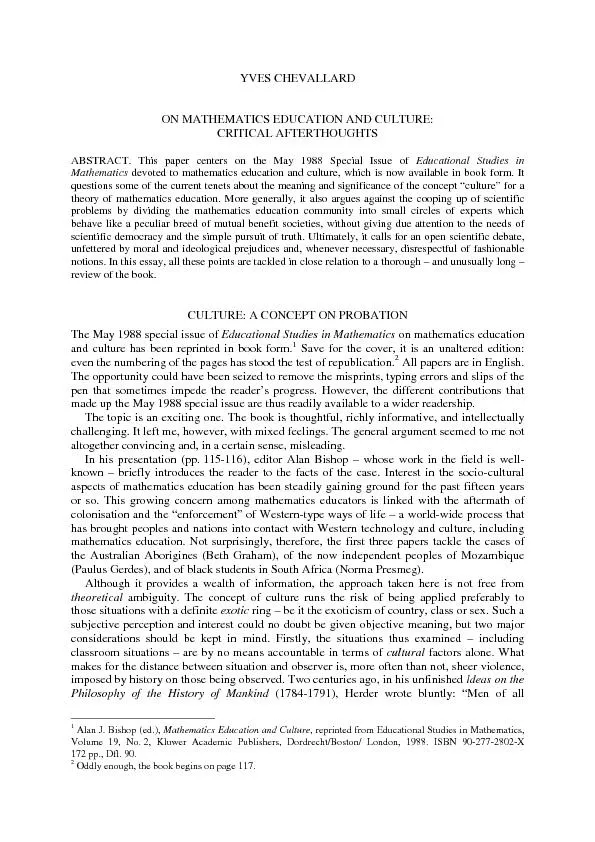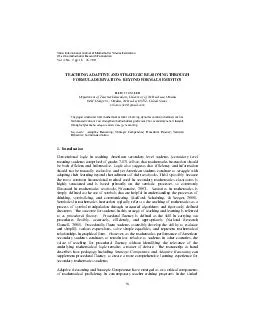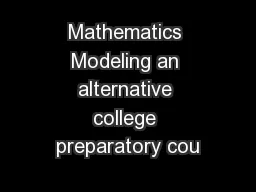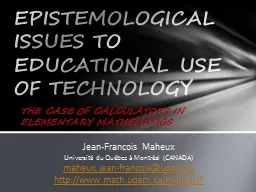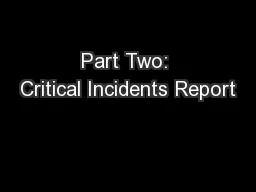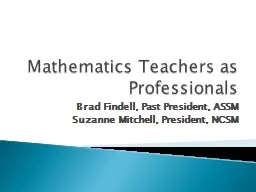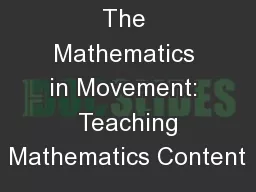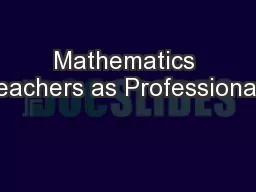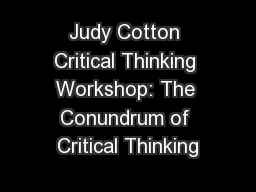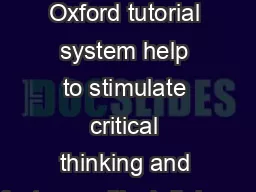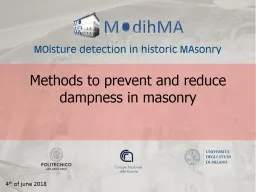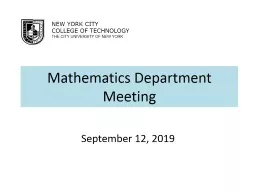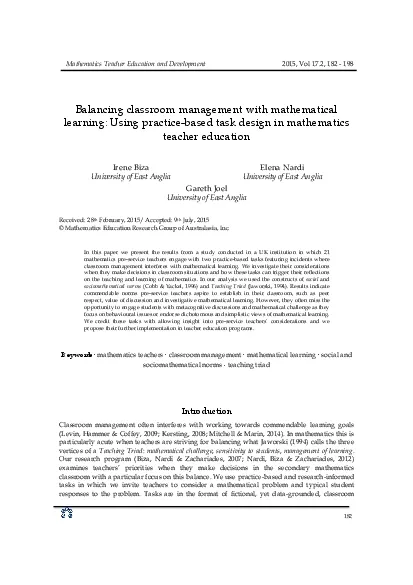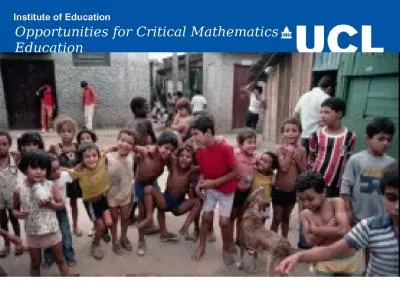PDF-YVES CHEVALLARDON MATHEMATICS EDUCATION AND CULTURE:CRITICAL AFTERTHOU
Author : tatiana-dople | Published Date : 2016-08-06
Alan J Bishop ed Mathematics Education and Culture reprinted from Educational Studies in MathematicsVolume 19 No 2 Kluwer Academic Publishers DordrechtBoston London
Presentation Embed Code
Download Presentation
Download Presentation The PPT/PDF document "YVES CHEVALLARDON MATHEMATICS EDUCATION ..." is the property of its rightful owner. Permission is granted to download and print the materials on this website for personal, non-commercial use only, and to display it on your personal computer provided you do not modify the materials and that you retain all copyright notices contained in the materials. By downloading content from our website, you accept the terms of this agreement.
YVES CHEVALLARDON MATHEMATICS EDUCATION AND CULTURE:CRITICAL AFTERTHOU: Transcript
Download Rules Of Document
"YVES CHEVALLARDON MATHEMATICS EDUCATION AND CULTURE:CRITICAL AFTERTHOU"The content belongs to its owner. You may download and print it for personal use, without modification, and keep all copyright notices. By downloading, you agree to these terms.
Related Documents

